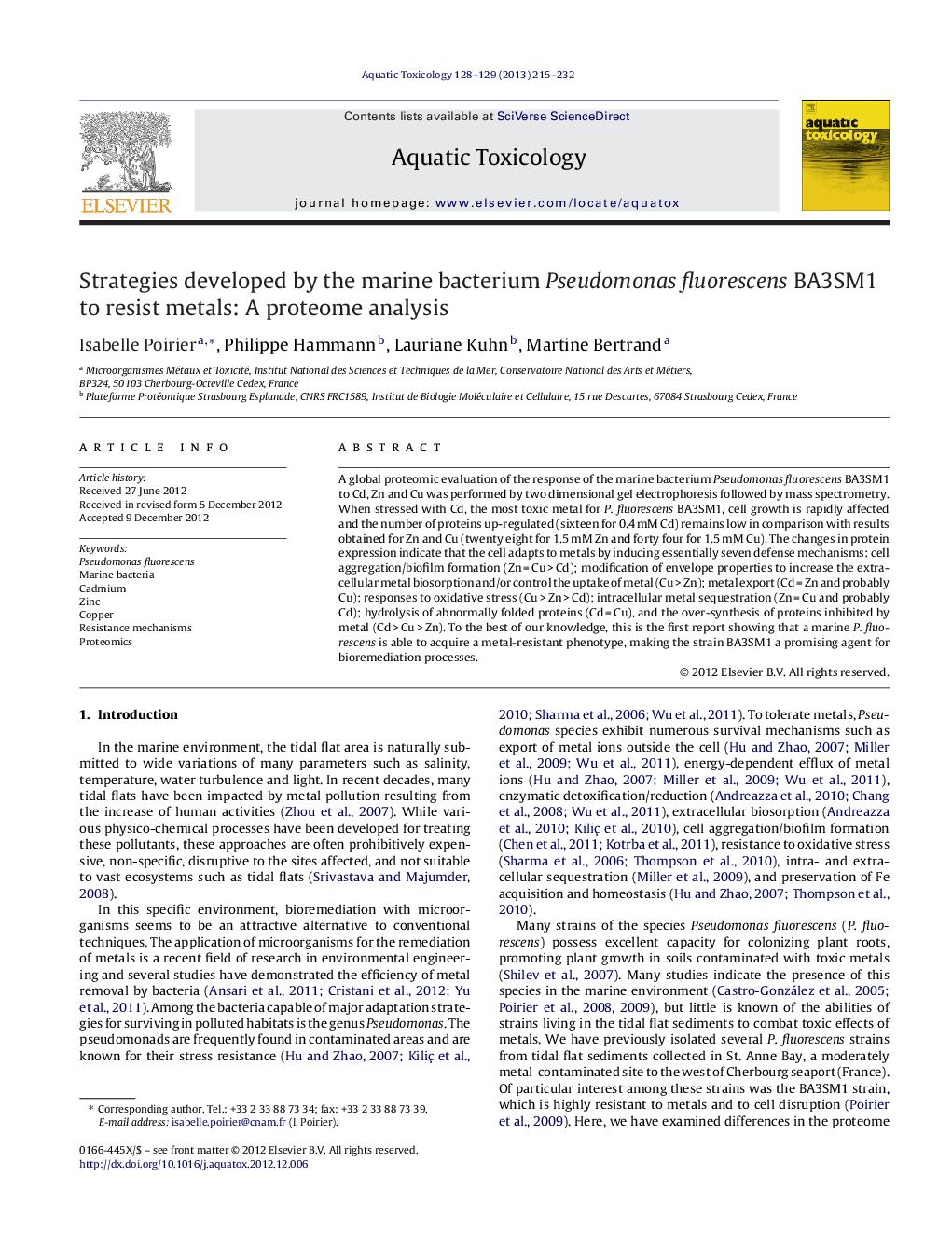| کد مقاله | کد نشریه | سال انتشار | مقاله انگلیسی | نسخه تمام متن |
|---|---|---|---|---|
| 4529545 | 1625968 | 2013 | 18 صفحه PDF | دانلود رایگان |

A global proteomic evaluation of the response of the marine bacterium Pseudomonas fluorescens BA3SM1 to Cd, Zn and Cu was performed by two dimensional gel electrophoresis followed by mass spectrometry. When stressed with Cd, the most toxic metal for P. fluorescens BA3SM1, cell growth is rapidly affected and the number of proteins up-regulated (sixteen for 0.4 mM Cd) remains low in comparison with results obtained for Zn and Cu (twenty eight for 1.5 mM Zn and forty four for 1.5 mM Cu). The changes in protein expression indicate that the cell adapts to metals by inducing essentially seven defense mechanisms: cell aggregation/biofilm formation (Zn = Cu > Cd); modification of envelope properties to increase the extracellular metal biosorption and/or control the uptake of metal (Cu > Zn); metal export (Cd = Zn and probably Cu); responses to oxidative stress (Cu > Zn > Cd); intracellular metal sequestration (Zn = Cu and probably Cd); hydrolysis of abnormally folded proteins (Cd = Cu), and the over-synthesis of proteins inhibited by metal (Cd > Cu > Zn). To the best of our knowledge, this is the first report showing that a marine P. fluorescens is able to acquire a metal-resistant phenotype, making the strain BA3SM1 a promising agent for bioremediation processes.
► The marine bacterium Pseudomonas fluorescens BA3SM1 is highly resistant to Cd, Cu and Zn.
► This marine bacterium is able to respond to high metal concentrations by numerous changes in protein regulation.
► Seven major defense mechanisms help the bacteria to counteract metal toxicity.
► This bacterium is probably a promising agent for the remediation of polluted sediments.
Journal: Aquatic Toxicology - Volumes 128–129, 15 March 2013, Pages 215–232